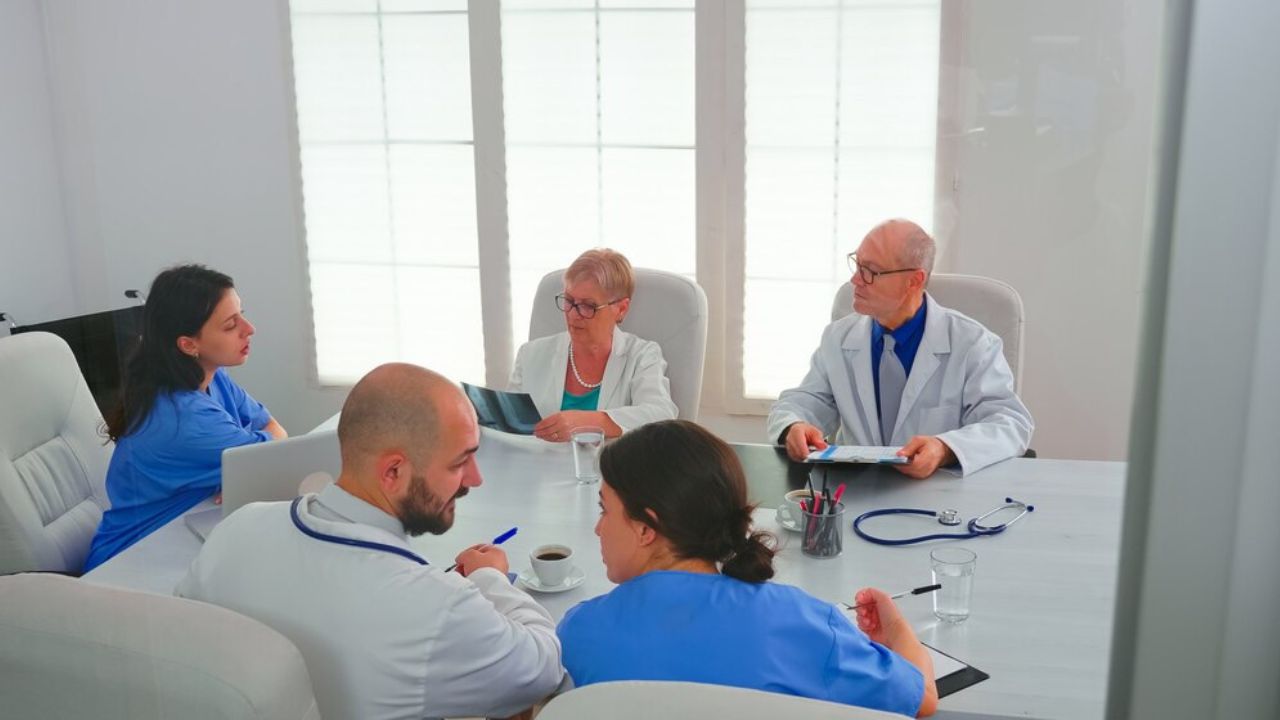HEALTH
Techniques for Effective Trauma Therapy: Harnessing the Power of EMDR

Introduction to Trauma Therapy
Trauma therapy is an effective tool that helps individuals take back control of their lives from distressing and disabling experiences. It’s a targeted form of psychotherapy aimed at addressing the emotional scars left by traumatic incidents. Through trauma therapy, individuals learn to process these events healthily, leading to a significant reduction in psychological stress and an improved state of overall well-being. Various therapeutic methods are used to tackle trauma, one of which is highlighted at trauma therapy Denver, where EMDR (Eye Movement Desensitization and Reprocessing) is employed. By equipping individuals with coping strategies, trauma therapy empowers them to navigate their emotional landscapes, shedding light on pathways toward healing and growth.
Understanding EMDR
Eye Movement Desensitization and Reprocessing (EMDR) emerged in the late 1980s as an innovative therapy method focused on healing trauma. Unlike traditional therapies that rely heavily on dialogue, EMDR employs a structured protocol using bilateral stimulation, such as guided eye movements, to aid in reprocessing traumatic memories. The therapy is grounded in the Adaptive Information Processing model, which suggests that trauma disrupts standard information processing, causing distress. This theory suggests that the brain can naturally recover from psychological trauma, similar to how the body heals from physical trauma. Through EMDR, individuals can access and process disturbing memories and transform their emotional impacts into less burdensome recollections. According to research and scholarly articles available on sites like the Center for Addiction and Mental Health, EMDR is recognized for its efficacy in treating PTSD and other trauma-related conditions, offering a scientifically backed approach to healing.
How EMDR Facilitates Healing
The healing process catalyzed by EMDR is profound and multifaceted. During EMDR sessions, the patient does not confront the memory in isolation; instead, they are simultaneously engaged in bilateral stimulation, most commonly through eye movements. This process is believed to mimic the brain’s natural processing during REM sleep, allowing the traumatic memory to integrate into the person’s semantic memory network, decreasing its emotional charge. Scientific studies suggest that through this mechanism, EMDR can effectively alter the way trauma is neurologically stored in the brain. This transformation results in reduced symptoms of distress and an increase in personal resilience and psychological freedom. Supporting this is the National Center of Biotechnology Information, which emphasizes how understanding trauma’s effects on the brain is crucial for treatments aiming to restore mental health equilibrium.
Steps Involved in an EMDR Session
An EMDR session is a carefully structured process divided into eight essential phases. The journey begins with history-taking and treatment planning, where therapists gather comprehensive details about the client’s trauma history. Next, during the preparation phase, clients are oriented on what to expect and learn self-care techniques between sessions. The assessment phase follows, where specific memories are targeted, and the associated negative beliefs and physical sensations are identified. Phases four through six—desensitization, installation, and body scan—are where the intensity of the memory is reduced, positive beliefs are strengthened, and residual tension is identified and processed. Throughout these phases, the therapist plays a crucial role in guiding the client, providing support, and ensuring the client’s safety. The session concludes with closure, ensuring the client leaves the session safe and grounded. A reevaluation follows this to assess progress and direct future sessions.
Benefits of EMDR Therapy
EMDR therapy offers a plethora of benefits, making it an attractive choice for trauma recovery. Its primary advantage lies in the expedited relief it provides, allowing individuals to experience significant improvements in a relatively short period. This efficiency is particularly beneficial for those with intense trauma symptoms who may struggle with longer therapeutic timelines. Additionally, EMDR is non-invasive and does not require extensive verbalization of distressing events, which can be a relief to those who find it difficult to articulate their trauma. The therapy’s effectiveness in alleviating symptoms of PTSD, anxiety, and even phobias is well-documented, providing a lifeline for many seeking to elevate their mental health and lead fulfilling lives. Additionally, EMDR’s capacity to process traumatic memories can result in lasting advantages, including decreased occurrence and severity of flashbacks and nightmares and an overall enhancement in quality of life.
EMDR vs. Traditional Therapy Methods
While Cognitive Behavioral Therapy (CBT) and other traditional therapy methods focus primarily on modifying negative thought patterns and behaviors associated with trauma, EMDR takes a different approach. It targets the neurological basis of trauma, facilitating the reprocessing of distressing memories at a fundamental level. This distinctive mechanism positions EMDR as a complement or alternative to conventional therapeutic strategies, especially for individuals who have not found success with traditional talk therapies. EMDR’s ability to work swiftly also stands out, offering hope for those who require immediate symptom alleviation without delving deeply into the details of the traumatic events.
Who Can Benefit from EMDR?
EMDR therapy is highly adaptable and suitable for a diverse demographic, including adults and children experiencing various forms of psychological distress. It’s particularly effective for individuals with PTSD but is also beneficial for those dealing with anxiety, depression, panic disorders, and even grief and loss. The therapy’s adaptability allows it to be tailored to meet clients’ individual needs, providing a customizable approach that respects the unique nature of each person’s journey and psychological makeup. By offering a safe space for transformation, EMDR enables individuals from all walks of life to achieve significant therapeutic breakthroughs.
Potential Challenges and Considerations
While EMDR is highly effective, therapists and clients must be mindful of challenges and considerations. Some individuals may experience heightened emotional responses initially, requiring careful pacing by a seasoned therapist. Practitioners must thoroughly prepare clients, setting realistic expectations and ensuring robust support throughout the therapeutic process. Precautions are also needed for anyone with particular mental health conditions or complex trauma histories that could complicate the therapeutic experience. This thoughtful consideration helps mitigate risks and enhance therapeutic outcomes.
Real-Life Success Stories
Success stories from those who have undergone EMDR therapy speak volumes of its transformative potential. Clients frequently report emotional freedom and cognitive clarity after sessions. For many, EMDR has been a turning point in regaining control over their thoughts and emotions. Therapists share numerous accounts of clients moving past ingrained fears and anxieties, demonstrating the therapy’s impressive ability to restore autonomy and hope. These real-life stories underscore the profound impact EMDR can have in cultivating resilience and emotional well-being.
Resources and Further Reading
Individuals who want to investigate EMDR therapy further have many choices. Books, scholarly articles, and online courses can provide comprehensive insights into this modality’s vast potential. These educational materials can enhance understanding and equip individuals with the knowledge to pursue or recommend this therapy. By taking informed steps, both potential clients and practitioners can explore the full spectrum of opportunities EMDR offers in the realm of trauma recovery.
HEALTH
Milestones Achieved with PT

The milestones achieved through physical therapy often mark significant turning points in patients’ lives. These moments of progress inspire both patients and therapists alike:
- Walking Again After an Injury: A patient recovering from a severe ankle sprain celebrated the moment they walked unaided for the first time, a milestone made possible through dedication to their PT program.
- Returning to Work: For individuals with physically demanding jobs, regaining strength and endurance through PT means returning to their careers with confidence and capability.
- Competing in Sports Post-Rehabilitation: Athletes recovering from injuries achieve milestones like running their first race or competing in their sport again, thanks to customized rehabilitation plans.
If you’re looking for trusted professionals to help you achieve your goals, consider physical therapy Norman OK for comprehensive care and support.
For those seeking additional options, finding physical therapists near me ensures you’re working with experienced providers ready to guide you toward your own success story.
Start Your Journey to Success
Physical therapy has the power to change lives by addressing pain, improving mobility, and empowering patients to achieve incredible milestones. Whether you’re recovering from an injury, managing a chronic condition, or looking to enhance your athletic performance, PT offers a proven path to progress.
Take inspiration from these success stories and begin your journey today. With expert guidance and dedication, you too can achieve life-changing results through physical therapy.
HEALTH
Dr. Richard McDonnell Kansas City: A Pillar of the Medical Community

Kansas City is renowned for its vibrant culture, community-driven ethos, and cutting-edge developments in various fields – including healthcare. At the heart of this medical excellence stands Dr. Richard McDonnell Kansas City, a true pillar of the Kansas City medical community. With decades of dedication and countless contributions, Dr. McDonnell has earned a legacy of trust, innovation, and compassion.
This blog dives into the inspiring story of Dr. McDonnell, exploring his background, his key contributions to the community, and why his work continues to make a lasting difference.
A Brief Biography of Dr. Richard McDonnell
Born and raised in the Midwest, Dr. Richard McDonnell pursued medicine with a passion that stemmed from a deeply rooted desire to improve the lives of others. After earning his medical degree from a prestigious institution, Dr. McDonnell continued his medical training at leading hospitals and research centers, specializing in internal medicine and community health.
Through a combination of determination, empathy, and unmatched expertise, Dr. McDonnell became a prominent figure in Kansas City’s medical circles. His work touches nearly every corner of healthcare, from patient care to education and advocacy.
Key Milestones and Achievements
- Clinical Excellence: Dr. McDonnell has spent over 25 years providing top-tier clinical care, earning recognition for his diagnostic precision and patient-focused approach.
- Academic Contributions: A lifelong learner and teacher, he has mentored young physicians and contributed to medical publications to advance the collective knowledge of his field.
- Advocacy and Community Initiatives: Dr. McDonnell actively works to promote accessible healthcare for underserved populations in Kansas City, extending his support to numerous local health initiatives.
Dr. McDonnell’s Contributions to Kansas City Healthcare
Dr. McDonnell’s contributions go far beyond the examination room. Below are the key ways he’s helped shape the medical community:
1. Elevating Standards in Patient Care
Dr. McDonnell is celebrated for his empathetic approach to treating patients. Known for his ability to listen attentively and provide tailored treatment plans, his practice has become a beacon of patient-centered care in the Kansas City area. His philosophy emphasizes understanding the individual as a whole rather than focusing solely on their symptoms.
Impact in Numbers:
- Serves hundreds of patients yearly, many of whom report higher satisfaction and better long-term health outcomes under his care.
- Played a role in implementing new diagnostic tools, streamlining patient processes, and reducing time-to-treatment in clinical settings.
2. Pioneering Health Education Programs
Dr. McDonnell firmly believes in the power of education. He has partnered with local institutions to establish health workshops and educational programs designed to empower Kansas City residents to take control of their health. These programs focus on preventive measures, such as nutrition, exercise, and regular health screenings.
Some notable initiatives include:
- Public seminars on cardiovascular health and diabetes management.
- High school outreach programs that inspire future health professionals.
3. Advancing Medical Research
Beyond patient care, Dr. McDonnell has been involved in groundbreaking research projects aimed at improving diagnostic methods and treatment protocols for common diseases. His clinical trials and partnership with research universities in Kansas City have resulted in innovations that benefit patients nationally.
Dr. McDonnell’s key research interests include:
- Chronic disease management, specifically Type 2 diabetes and hypertension.
- Innovations in telehealth to expand access to care for rural populations.
4. Bridging Healthcare Gaps in Kansas City
Kansas City is not immune to the issue of healthcare disparities. Dr. McDonnell has played a significant role in addressing these issues by working with nonprofit organizations and local clinics to bring care to underserved communities. He’s led volunteer groups that offer free medical check-ups, vaccinations, and health education across vulnerable neighborhoods.
5. Mentoring Future Generations
Dr. McDonnell’s influence extends to his role as a mentor. He collaborates with universities and residency programs across Kansas City, sharing his knowledge with aspiring doctors. His emphasis on ethical, empathetic medicine has inspired countless young physicians to follow in his footsteps.
Why Dr. McDonnell’s Work Matters
Dr. McDonnell’s tireless efforts serve as a reminder of how individuals can profoundly affect their communities. His work addresses critical healthcare challenges, including:
- Preventive Care Awareness: Helping people adopt healthier lifestyles to avoid chronic diseases.
- Health Equity: Bringing quality healthcare to all demographics, regardless of socioeconomic status.
- Community Resilience: Inspiring local partnerships to create a more robust, patient-focused healthcare system.
The Future of Healthcare in Kansas City, Inspired by Dr. McDonnell
The legacy of Dr. Richard McDonnell Kansas City acts as a blueprint for the future of healthcare innovation in Kansas City. By focusing on community, education, and research, Kansas City can continue to raise the bar for medical excellence.
Whether working with patients directly or inspiring systemic change, Dr. McDonnell’s forward-thinking approach ensures a healthier, more connected Kansas City for future generations.
Final Thoughts
Dr. Richard McDonnell Kansas City name is synonymous with innovation, care, and community. His endless efforts—a perfect blend of compassion and science—continue to promote wellness and progress for thousands of individuals across Kansas City.
Want to stay updated on impactful figures in healthcare like Dr. McDonnell? We share stories, insights, and tips to help you take control of your health and thrive. Subscribe to our newsletter or explore more inspiring stories on our blog.
HEALTH
Finding the Ideal Elderly Care Provider for Your Loved One

Selecting the right elderly care provider involves assessing medical needs, personal preferences, and lifestyle compatibility. Key considerations include staff qualifications, available services, and the facility’s reputation. Visiting potential providers, asking detailed questions, and seeking recommendations can help ensure a supportive and nurturing environment, promoting well-being and comfort for your loved one.
Introduction
Empathy, love, and responsibility motivate us to ensure our loved ones receive the finest care possible as they age. Selecting the right elderly care provider involves navigating a complex landscape of diverse options and emotional stakes. This decision is crucial as it impacts not just the well-being of the loved one but also the peace of mind of the entire family. When considering professional services through avenues like elderly care Missouri or anywhere else, the emphasis should always be on careful planning and informed assessments. This article offers a comprehensive guide to uncovering the facets of elderly care, equipping you with insights necessary for making a choice grounded in your family’s unique needs and circumstances.
Understanding Your Needs
To choose the best senior care provider, it’s crucial to understand your loved one’s unique needs, including daily routines, personal preferences, and emotional well-being. This helps define the care structure and create a personalized plan to enhance their daily life quality. This understanding ensures that every decision aligns with their comfort, dignity, and security, making it a customized blueprint for improving their quality of life.
Types of Elderly Care Services
In-Home Care
In-home care is popular for seniors who value their comfort and familiarity as they age. It allows them to stay in their loved home while receiving personalized services. Caregivers assist with household chores, personal care, and medical tasks, fostering independence and continuity. This familiar environment significantly contributes to well-being as professionals adapt to evolving needs.
Assisted Living Facilities
Assisted living centers are ideal for elderly individuals who enjoy routine activities and social interaction. They provide a supportive environment, encouraging residents to engage in activities, develop friendships, and participate in community events. These facilities foster an active lifestyle while ensuring safety and support, allowing seniors to enjoy their time with fewer responsibilities. This level of engagement is particularly beneficial for those who enjoy peer company and organized activities.
Evaluating Caregiver Credentials
Entrusting the care of a loved one to another demands confidence in that individual’s capabilities, thus making it imperative to evaluate their credentials thoroughly. Check for formal certifications, professional training, and relevant experience in elderly care. Talking to references, particularly from families who have previously employed the caregiver, can provide firsthand insight into their reliability and competence. It’s wise to consult detailed guides, such as the one from the Senior Living Caregiving Guide, highlighting key attributes to seek in potential caregivers. These steps help ensure the caregiver possesses the skills needed for daily tasks and the sensitivity and emergency preparedness essential in caregiving roles.
Financial Considerations
Financial planning is an essential component in the decision-making process for elderly care. Understanding the costs of various options helps prevent unexpected expenses and ensures sustainable care. Investigate different cost structures, considering what aligns best with your financial capabilities. This includes checking possibilities for insurance coverage, government support, and any available community resources or subsidies. Addressing financial considerations simplifies long-term planning, allowing you to focus on maintaining consistent care quality rather than navigating financial strains.
Using Technology to Aid Care
Technology is pivotal in transforming how elderly care is delivered today. Innovative tools, such as wearable health monitors and medication management apps, enhance the safety and efficiency of care. These advancements enable real-time monitoring of vital signs, allowing caregivers and family members to respond swiftly to any changes. Utilizing technology in care not only aids in routine tasks but also provides peace of mind by facilitating constant communication and updates. Keeping up-to-date with the latest advancements in elderly care technology empowers families to harness these tools, optimizing the overall care experience while reducing the burdens on both the caregiver and care recipient.
Conducting Interviews with Potential Caregivers
Interviews are crucial for assessing a caregiver’s suitability beyond their professional qualifications. They should cover their experiences, problem-solving skills, and handling of critical situations. The interviews should also evaluate their interpersonal skills, communication style, and attitudes toward caregiving roles. These personal exchanges complement formal credentials, providing insight into the caregiver’s suitability and compatibility, which is vital for a successful caregiving arrangement.
Trial Periods and Monitoring
Implementing a trial period allows families to evaluate the suitability of a caregiver in real-world conditions. During this phase, monitor their interactions closely, looking for signs of rapport and adaptability to your loved one’s needs. Engage in open discussions with your loved one to understand their level of comfort and satisfaction. This trial period allows the caregiver and the family to make necessary adjustments, ensuring both parties are satisfied. Regular feedback and communication during this time can significantly fine-tune the caregiving arrangements to enhance mutual trust and assurance.
Long-Term Planning
Proactive long-term planning helps navigate health and personal preference shifts in your loved one’s care. Regularly re-evaluate the care arrangement to adapt to new medical needs, emotional changes, or lifestyle wishes. This approach ensures a high quality of life by maintaining consistency with evolving requirements. It is crucial for providing continuous quality care, meeting immediate needs, and preparing for future developments.
-

 BLOG8 months ago
BLOG8 months agoTribute Printed Pics: Top 10 Ways to Honor Loved Ones
-

 NEWS8 months ago
NEWS8 months agoNEWS JoTechGeeks: How to Stay Updated with the Latest News
-

 BLOG6 months ago
BLOG6 months agoThe //Vital-Mag.net Blog: Your Daily Dose of Inspiration
-

 ENTERTAINMENT9 months ago
ENTERTAINMENT9 months agoFreemoviesfull.cc: Ultimate Guide
-

 HEALTH9 months ago
HEALTH9 months ago2023-1954: Enhancing Health and Vitality
-

 TECH8 months ago
TECH8 months agoWww abithelp .com: Your Ultimate Online Assistance Platform
-

 HEALTH8 months ago
HEALTH8 months agowww healthsciencesforumcom: A Trusted Health Sciences Platform
-

 TECH9 months ago
TECH9 months agoWebtoon XYZ: A Journey into the World of Digital Comics
